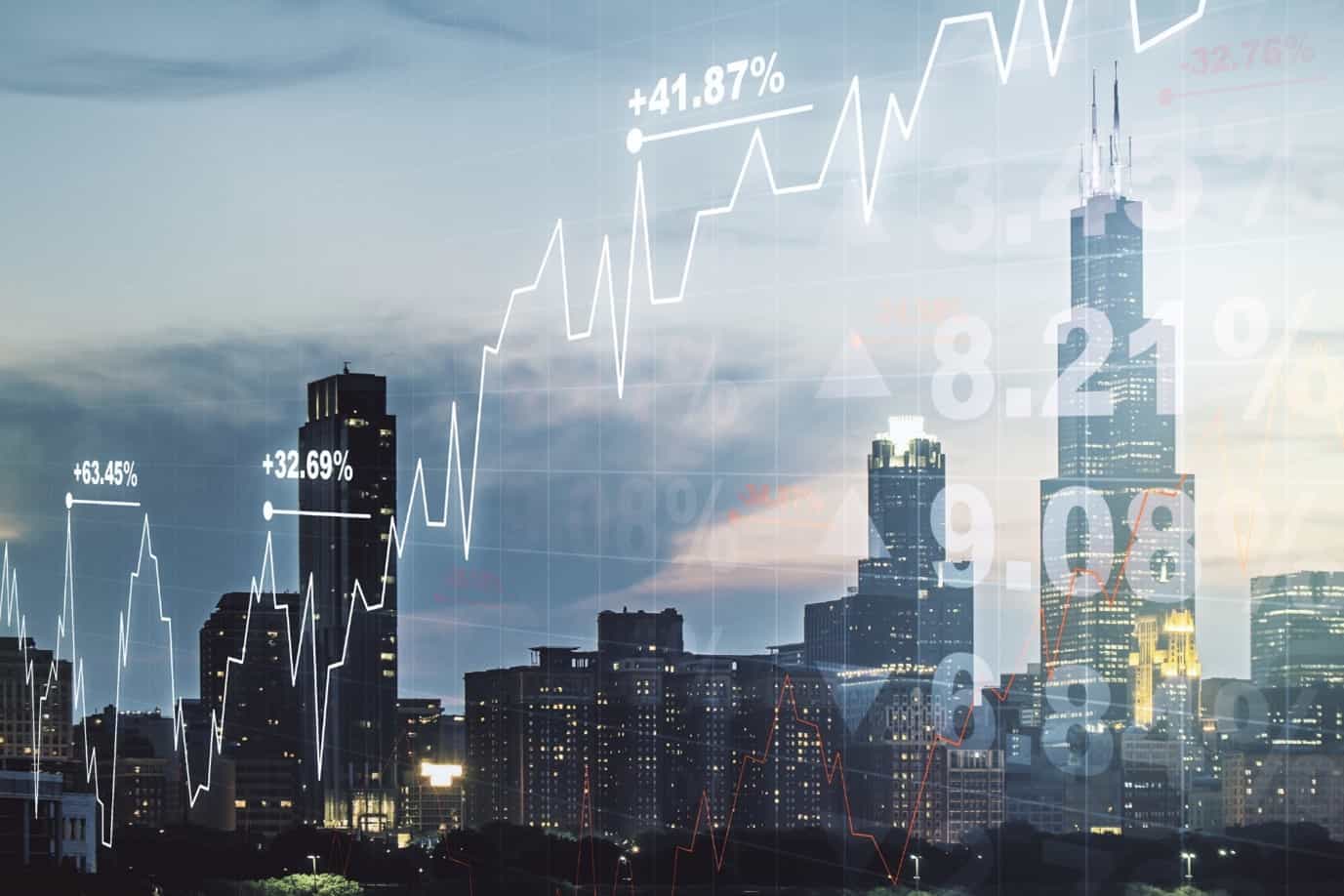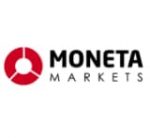
Leverage and margin are among the most widely discussed topics by forex traders, and it doesn’t matter how experienced you are because it will always be a part of your trading activity, whether you like it or not.
If you’re new to the forex markets, you will have certainly come across forex websites or brokers who advertise how you can trade in massive volumes only with a small deposit, confusing you without a doubt. Well, it’s possible only because of the leverage provided by brokers, and it is precisely this leverage that drives traders to the forex markets, with many of them uncertain about the underlying risk to their capital.
So, what exactly are leverage and margin? For those still unfamiliar or unsure, this article explains what they mean, their pros and cons, their impact on your portfolio and how to use them safely.
What is Leverage?
One of the primary features of forex trading is the ability to use leverage in your trading activity. Let’s answer the question of what is leverage in forex and how does it work.
Leverage is a tool that allows traders access to a much bigger position compared to the capital they have in their brokerage accounts. Financial market trading is either leveraged or non-leveraged. Traditional investors generally purchase securities limited by the amount of money they hold in their brokerage accounts. In other words, they are unleveraged. For example, investing in shares of publicly-traded companies and keeping them in an electronic form or purchasing cryptocurrency units and storing them in crypto-wallets.
On the other hand, leverage allows traders to borrow funds from their brokers to carry out potentially bigger trades than their existing capital.
So, how does leverage work? If a trader has $1,000 in his brokerage account and his broker allows him to place trades up to $10,000, the leverage offered by the forex broker is 10:1. In simpler terms, the trader has access to ten times their existing capital.
The degree of leverage provided by the forex broker depends on their risk management framework and the limitations, if any, enforced by the market regulator of that particular country or region. For instance: The stringent regulations in the UK and the EU permit forex brokers to only provide a maximum leverage of 30:1 in specific FX pairs and much lower leverage in others. On the other hand, in countries where the regulations are not as harsh, the leverage provided by forex brokers could extend up to 500:1.
What is Margin?
Now that you know what leverage means, let’s review another widely discussed topic: margins. If you’re new to the financial markets, the terms margin and leverage are so commonly used that it’s easy to get confused. Although the two are related, there’s a big difference between them.
Margin is the initial deposit or collateral a trader has to provide to open a leveraged forex trade. In other words, for traders to access leverage, they have to put down a margin deposit. For example: If a broker asks for a 5% margin to open a mini lot of USD/JPY comprising 10,000 units, you must maintain at least $500 in your brokerage account to open a trade and keep the trade open.
The margin requirements charged by a forex broker can differ from their peers and vary across currency pairs and asset classes. Generally, FX pairs that are highly volatile and those with low volumes will require higher margins than those with low volatility and high volumes.

So, how does margin relate to leverage? Margin and leverage are closely interrelated. In the above example, if 5% or $500 is the margin, the remaining 95% or $9,500 is the leverage. As mentioned earlier, the financial market regulator of a country generally lays out the rules regarding the maximum permitted leverage that a forex broker can offer across asset classes. Forex brokers in the UK and EU only allow max leverage of 30:1 for the major FX pairs and smaller leverage for the others, so if you open a trading account in any European Union country, your margin for the major FX pairs would be 3.33%, and your leverage would be 96.67%.
Calculating Leverage and Margin
As stated earlier, an unleveraged trade involves buying an asset based on the capital held in a trader’s brokerage account. On the contrary, leveraging a transaction means executing a trade higher in value than the available cash in your brokerage account. However, the leverage varies across asset classes and is a component of the margin required.
So, now that you know the difference between unleveraged, leveraged and margin trading, let’s review how you calculate a one-pip profit/loss on a mini USD/CHF pair trading at 0.9200. Since the USD/CHF is an indirect currency pair, a pip value is calculated using the formula:
- (Lot size * pip)/ current price
Based on the above formula:
- Lot size = $10,000
- Pip = 1
Current price = 0.9200
Let’s begin with unleveraged trading, which is pretty straightforward. If you’re executing a trade, you have to have an upfront margin of 100% or $10,000. Here, your profits or losses are defined by the pip value.
- Pip value = (10,000 * 0.0001)/0.9200 = $1.086
- P/L (in % terms) = 1.086/10000 = 0.01086%
Next, let’s look at leveraged trading. If your margin requirements are 5%, your leverage will be 100-5= 95%. So, you will only need $500 to execute a USD/CHF mini lot of $10,000.
- Pip value = (10,000 * 0.0001)/0.9200 = $1.086
- P/L (in % terms) = 1.086/500 = 0.2172%
A straightforward method to calculate leverage is to divide the total transaction value by the capital employed.
Example: If the total value of a transaction is $100,000 and the capital employed is $2,000:
- Leverage = 100,000/ 2,000 = 50:1
On the contrary, margins can be calculated by dividing the capital employed by the total transaction value:
- Margin (%) = 2,000/100,000 = 0.02 = 2%
The Benefits of Trading with Leverage
There are a couple of benefits to trading with leverage. First, it allows you to gain additional exposure to the market by borrowing funds from your forex broker. The borrowed funds will enable you to magnify returns, which might not have been possible otherwise.
Although these are the only benefits of leverage trading, they assist traders in building their capital, even with a small investment.
The Drawbacks of Using Leverage
Leveraged trading comes with several risks. Just as borrowed funds let you magnify returns, adverse price movements in the forex markets will amplify your losses. The higher the leverage, the greater the risk. In addition, all overnight leveraged positions incur borrowing or rollover costs. So, if you’re holding leveraged positions overnight, you will be asked to pay rollover costs, which will vary from one FX pair to another.
High leverage increases the volatility of a portfolio, and since margins are inversely proportional to leverage, highly leveraged traders constantly receive margin calls during adverse market conditions. A margin call compels traders to either top up their investments quickly or face the broker closing out some or all positions at the market price, leading to participants incurring potentially massive losses.
Related Articles
- Risk Management Tools for Trading Forex
- Risk Management Strategies for Forex Trading
- A Guide to Risk Management for Forex Trading
How Much Leverage Should You Use?
Many traders are drawn to the forex markets because of the massive leverage offered by brokers. However, many market participants fail to recognize that while leveraged trading multiplies profits, it amplifies losses too. For instance, if your broker offers a leverage of 100:1, your profits and losses are magnified 100 times.
So, is using leverage a lousy strategy, or is a specific leverage multiple a good option for traders? If so, how do I know what extent of leverage is best for me? Before getting to the leverage part, remember that trading is not a shortcut to getting rich. Secondly, more than 90% of traders in the forex markets lose money. So, unless you are consistently making profits on your trades, leverage only amplifies the pace of your losses.
That said, there are no specific levels or rules on the right or safe leverage to trade forex, although we recommend traders, especially beginners, not overleverage their positions. One way of doing that is by choosing a leverage level that makes you comfortable. For example, if you are a conservative trader and are against taking significant risks, a leverage of 5:1 or 10:1 might be appropriate for you. On the other hand, if you’re willing to take a higher risk, you could follow the 30:1 leverage set by UK’s Financial Conduct Authority (FCA). Always remember that the leverage you set should vary across FX pairs. The higher the volatility, the lower the leverage, and vice-versa.
Secondly, ensure you place stop losses on all leveraged trades. That’s the only way to mitigate the risk of using leverage under adverse market conditions.
Safe Forex Brokers
Leverage is a double-edged sword which you should have a basic understanding of now. So, whenever you choose a forex broker, don’t just sign-up with them because they provide massive leverage. Of course, leverage is essential, but reliability, quality of customer support, trading tools and platforms, low spreads and the speed of order execution should be the primary reasons to select a forex broker.
We have conducted extensive research on forex brokers and have put together a list of the safest brokers in the industry who also provide decent leverage. We recommend you consider them before signing up with an alternate broker.
| Broker | Features | Min Deposit | EURUSD Spread | ||
|---|---|---|---|---|---|
 Your capital is at risk
US Clients: No Regulated : Yes Your capital is at risk
US Clients: No Regulated : Yes
|
– Regulated by FCA, FSCA, CMA and FSC |
$200 | ECN 0.1, Standard 1.6 | ||
 Your capital is at risk
US Clients: No Regulated : Yes Your capital is at risk
US Clients: No Regulated : Yes
|
– 40% New Member Bonus
|
$100 | Fixed |
Sign
Up
Europe* CFDs are complex instruments and come with a high risk of losing money rapidly due to leverage. 79% of retail investor accounts lose money when trading CFDs with this provider. You should consider whether you understand how CFDs work and whether you can afford to take the high risk of losing your money.
|
|
 Between 74-89 % of retail investor accounts lose money when trading CFDs
US Clients: No Regulated : Yes Between 74-89 % of retail investor accounts lose money when trading CFDs
US Clients: No Regulated : Yes
|
|
$200 | NDD 0.09 / Standard 0.69 |
Sign
Up
Between 74-89 % of retail investor accounts lose money when trading CFDs
|
|
 * 82% of retail investor accounts lose money when trading CFDs with this provider. You should consider whether you can afford to take the high risk of losing your money
US Clients: No Regulated : Yes * 82% of retail investor accounts lose money when trading CFDs with this provider. You should consider whether you can afford to take the high risk of losing your money
US Clients: No Regulated : Yes
|
|
100GBP/AUD/EUR/USD | variable |
Sign
Up
* 82% of retail investor accounts lose money when trading CFDs with this provider. You should consider whether you can afford to take the high risk of losing your money
|
|
 Your capital is at risk
US Clients: No Regulated : Yes Your capital is at risk
US Clients: No Regulated : Yes
|
– Flexible leverage up to 500:1 |
$200 | From 0.1 | ||
 Your capital is at risk
US Clients: No Regulated : Yes Your capital is at risk
US Clients: No Regulated : Yes
|
$50 | 0.02 | |||
 61% of retail CFD accounts lose money
US Clients: No Regulated : Yes 61% of retail CFD accounts lose money
US Clients: No Regulated : Yes
|
|
$50 (varying by Country) | from 1 |
Sign
Up
*Don’t invest unless you’re prepared to lose all the money you invest. This is a high-risk investment and you should not expect to be protected if something goes wrong. Take 2 mins to learn more
|
|
 Your capital is at risk
US Clients: No Regulated : Yes Your capital is at risk
US Clients: No Regulated : Yes
|
|
$5 | From 0.0 pips | ||
 Your capital is at risk
US Clients: No Regulated : Yes Your capital is at risk
US Clients: No Regulated : Yes
|
– CySEC, FCA, FSCA, SCB Regulated |
$100 | |||
|
|
|||||
Summary
Leverage and margin are a part of the financial markets, irrespective of the asset class. Leverage allows traders to open a large position with a small amount of capital, amplifying profits and losses. However, while leverage is limited to only day trading in the case of stocks due to the rules framed by the stock exchanges, forex brokers permit market participants to use leverage even if they’re holding overnight positions. While the exchange limits the amount of leverage that intermediaries or brokers can offer, the extent of leverage provided by forex brokers can be significantly higher depending on where you’re trading from or unless the financial market regulator caps it.
Regarding FX trading, your knowledge and understanding of the markets will help you to generate positive returns on your portfolio. However, there’s nothing wrong with employing leverage to enhance your trading positions as long as you don’t excessively leverage your trades.
If you’re new to the markets, ensure you clearly understand the risks of using leverage. Don’t jump in and take all the leverage your broker offers just because you can. Start small, leverage wisely, and grow your investment step by step.